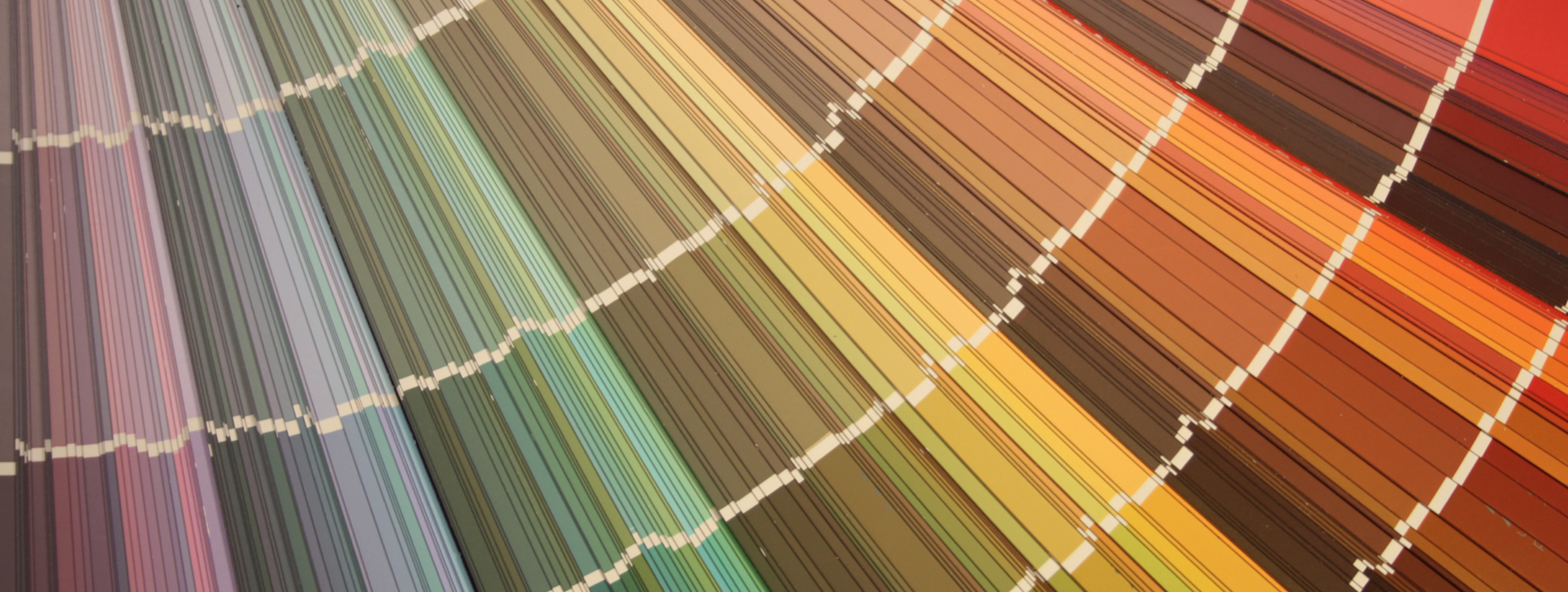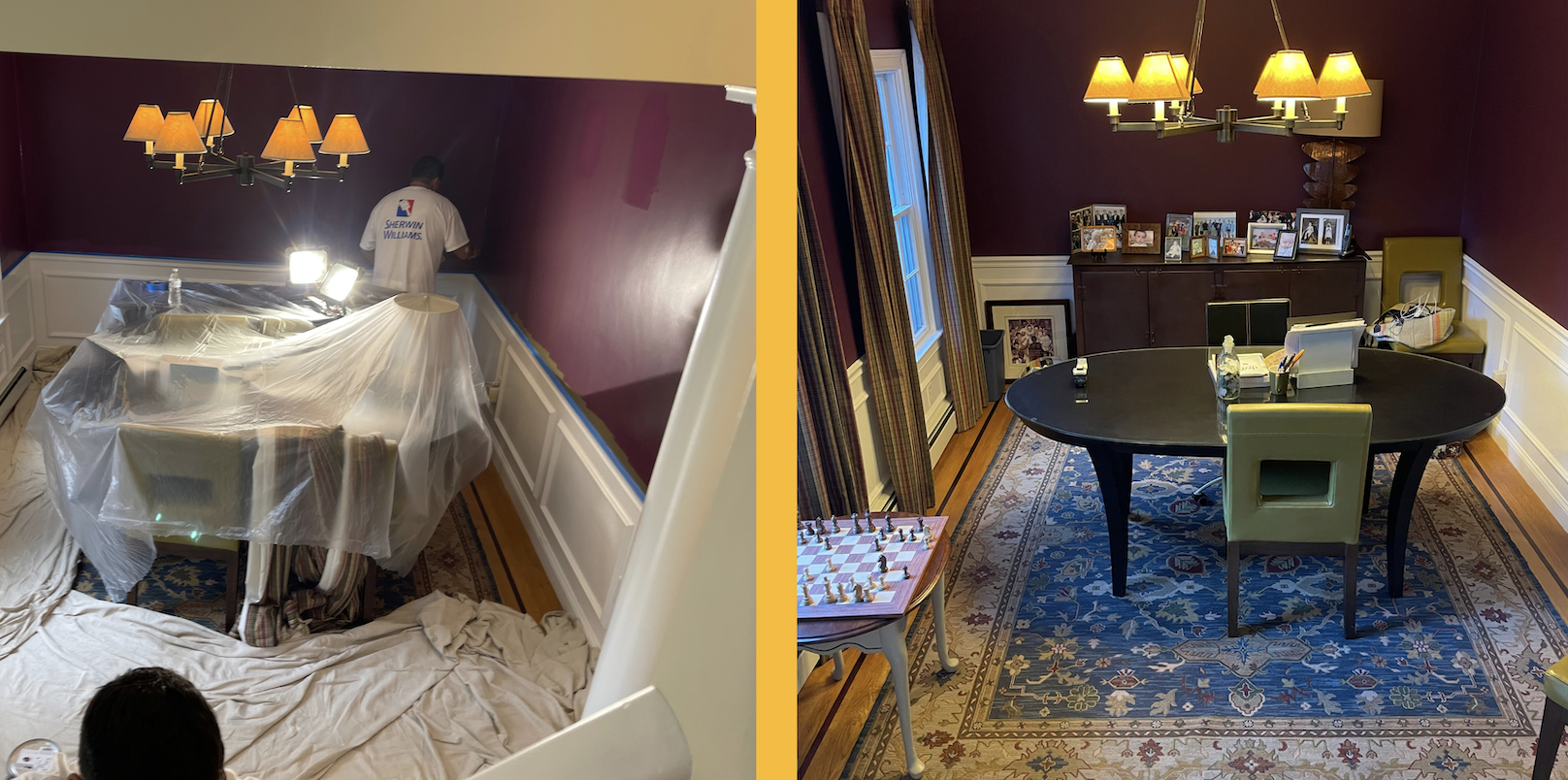
Help! I hate my new paint color.
Posted on July 28, 2023
Key takeaways from this article:
- Act Quickly if You Don’t Like the Color: Stop the painters immediately to minimize labor costs and verify if the paint formula was mixed correctly. Early intervention can save time and money.
- Test and Evaluate: Paint small sections, let them dry, and assess the color in different lighting and with furnishings in place. Colors can appear different when wet, dry, or out of context. True color is only accurate after it dries.
- Prevent Mistakes with Proper Planning: Use large samples, consult a designer if needed, and test colors in your home’s lighting conditions. Avoid rushing decisions to prevent long-term dissatisfaction.
- Use Reliable Resources: Trust reputable paint stores or professionals for mixing and advice, and always confirm the paint name along with the number to avoid errors.
It happens – what looks like an innocent color on the tiny paint chip is more pronounced and bold once it’s in the room or on your home.
Act quickly if you don’t like the paint color.
Since you may be in a panic over a paint color you’ve just painted, let’s start with what you can do right now if you don’t like the color:
Stop the painters as soon as you know the paint color is wrong.
If you’re having your home professionally painted, stop the painters as soon as you know the color is wrong. Yes, you will likely have to pay for more paint to fix the issue, but the earlier you can stop the painters, the more you can save on labor. To make you feel better, only about 12% of the cost of a professionally painted project is the cost of the actual paint, so the earlier you can stop the painters from painting, the less you will incur on the remaining 88% “labor costs” for the project. Don’t hesitate. I know it’s embarrassing, but a your painter has dealt with this before and will understand.
Was the paint mixed correctly?
Paint colors are often a combination of a name( “Azure Blue”) and number (“2160”), and if the numbers were reversed when the paint was ordered, you may have the wrong color paint.
Compare the paint to the color chip – if it looks off, the paint store’s equipment may not be calibrated, and you may need to have the paint remixed (at the paint store’s cost).

Wait for the paint to dry in one area.
The paint color looks different when it’s wet than when it’s dry.
Move the furniture back into the room:
Sometimes when the room is empty or the furniture is moved to the center of the room, all you can see are the walls. This may make the paint color seem off or too bold. And if the wall color was chosen to coordinate with your furnishings, viewing just the walls without the furniture does not give you context. Perhaps that grape paint was chosen to pull out a subtle grape color in the drapery, so you need the drapery for context.
Paint a second coat on a small area.
Sometimes the true color isn’t perfect until the second coat is on – especially if the new color is wildly different (think white paint over old brown walls or purple paint over old cream walls). I know we said, “Stop the painters,” but this is a case where if the color is “close,” you may want to paint a small area with 2 coats before you decide to move onto another color.
Remember that you will be looking at this color for years to come. If it’s on your exterior, you’ll cringe each time you drive up the driveway. If it’s in your powder room, you may start avoiding it altogether. It’s best to start over with a better color. If you need to, have the painter’s design team help you.
If you don’t want to repaint, try these two things:
You may be only painting to sell your home and won’t be living with the results. In this case, interior paint colors can be subdued by:
- Adding large wall decorations – like furniture, large wall hangings can take your focus off the walls.
- Changing the lighting in the room (this works well if the color is “close” but not quite “perfect.”)

How to prevent a paint color disaster:
Start your color journey online.
Pin or save the paint colors that you like. If the paint color is indicated on the photo, note it, but remember, since your home will have its own unique lighting, you may need a different color to get the same effect. If you give us the address of an exterior color you love, our designer will drive by that home and then calibrate the color to the exterior sun and shade your home receives. So while it may not be the same color name/number, it will LOOK like the same one.
Stop by the paint store.
Check out their 2″ x 2″ paper paint samples – they’re small, but they’re at least a bit larger than the tiny fingernail-sized ones in many color brochures. If you are in a rush, grab a few colors of each 2 x 2 sample and tape them together – voila, a larger color sample. You can also buy small jars of sample paint and paint them on a wall or poster board.
Use a designer.
Designers see the subtleties of color much better than the average person. Most of us don’t see these undertones and are surprised when, for example, a gray looks blue (or pink, or even yellow) when painted.

Kate Rafoth is a designer we hire on our customers’ behalf (a free service to anyone who needs help). Have the designer come to your home where it’s easy to see your other furnishings and lighting. It’s much harder to get a good color consultation over Zoom or FaceTime, but not impossible. If the painting company doesn’t have a designer on staff, hire one in your area. Google “Interior designers near me” or “color consultant near me.” Most interior designers will charge about $100 for an hour of their time. This is small money that will ensure you’re making the right paint color choice.
Check out our list of “universally pleasing paint colors.”
It’s a great place to start and gives you our “go-to” colors.
Decide on the color using large color samples. We offer 8″ x 8″ paper color samples for free (just email [email protected], and we’ll put them in the mail to you) – even if you’re painting the project yourself. If you have four 8″ x 8″ samples of the same color and tape them together, you now have a 16″ x 16″ sample that will allow you to really understand the color in context much better. If you’re in a rush, grab some of the 2″ x 2″ samples at the paint store and tape them together for a larger sample. You can also buy tiny sample jars of paint at the paint store for a brushed-on sample.
- Hang or paint the sample and move to different places in the room to decide how the color looks in different lighting.
- Live with the color(s) for a few days to see how the color feels at different times of the day. That medium gray might look like dark gray after sundown.
- In our experience, some colors you tape to the wall or exterior will be “immediately wrong.” What’s ironic is that they are often the colors you absolutely love before you see them in place.

Do a color rendering of the project – the computer can show you what your home will look like afterward. We offer a free color rendering with every estimate – just tell your estimator you’d like one.
Never choose colors in a rush. We had one husband paint their brown house yellow while his wife was away for the weekend as a “surprise.” He had chosen the color while pulling out of the driveway on the way to work (“Ummm…I guess let’s do this yellow.”). Well, surprise, she hated it.
Never give the paint store just the paint number – always give the paint color. It is much easier to get the paint number wrong (1945 vs. 1954) because numbers can be inverted, or typos can be made. By giving the painting company or paint store the name of the paint (“Sunshine Yellow”), there is almost no room for error.
If you’re painting the project yourself, call a local painting company to ask who mixes their paint. Sherwin Williams stores on the South Shore (Pembroke, Hingham, Quincy, etc.) and Curry Ace Hardware (Hanover, Quincy) for Benjamin Moore have highly calibrated paint mixers that will get the color accurate.
Don’t buy all the paint you need for your project at once. Buying 6 gallons at the start of the project instead of all 12 gallons will allow you to cut your losses if you’ve made a color mistake.
When the painters arrive (or if you’re doing it yourself), paint a large paint swath before painting the whole area.
If you need color help and live in the South Shore, South Coast area of Massachusetts, contact us for a painting quote at (781) 585-7246 or by clicking the red button at the top right to schedule one online.





